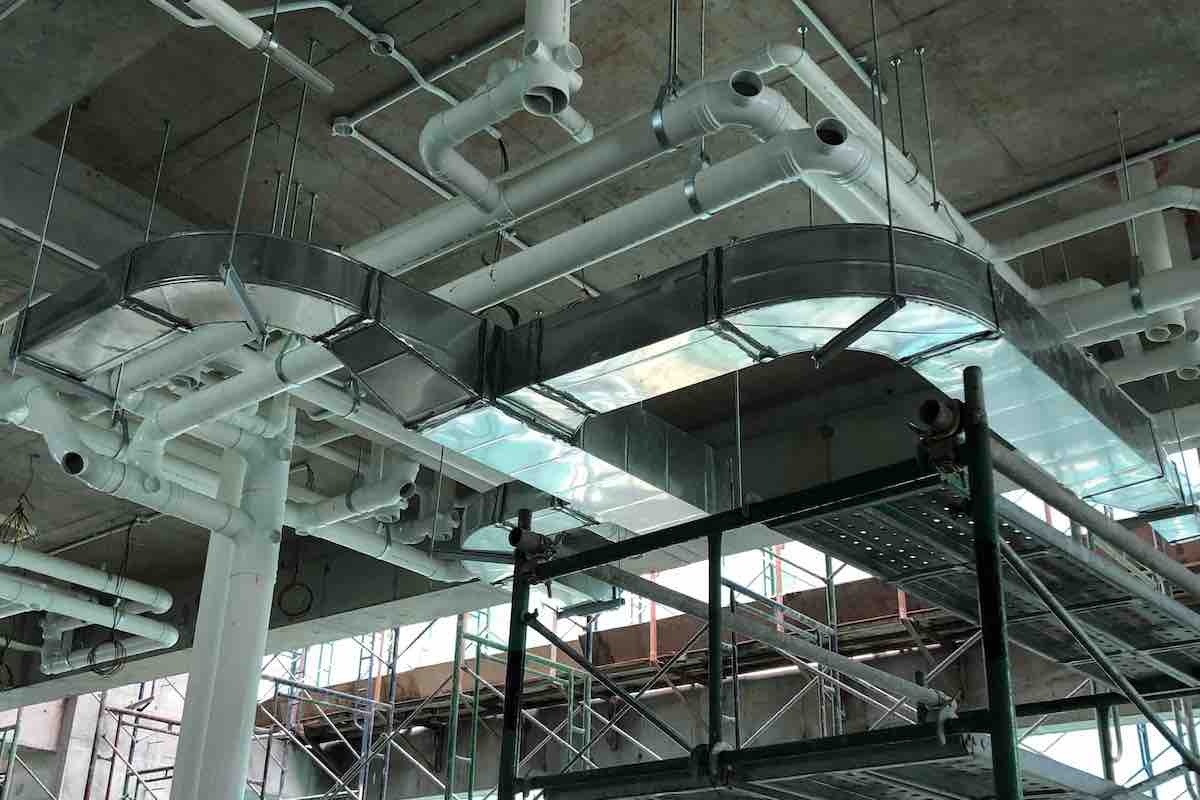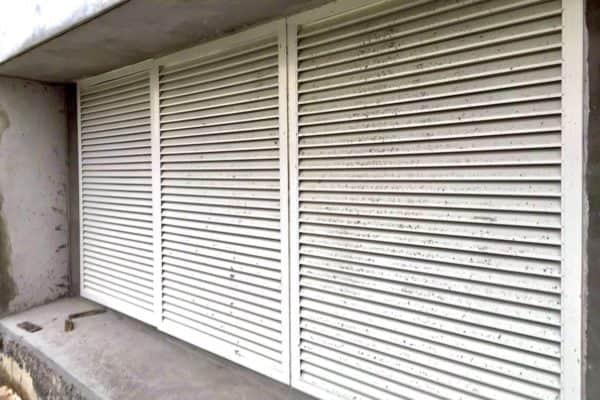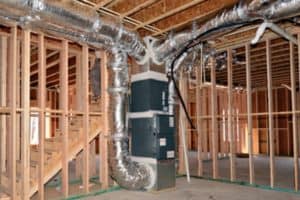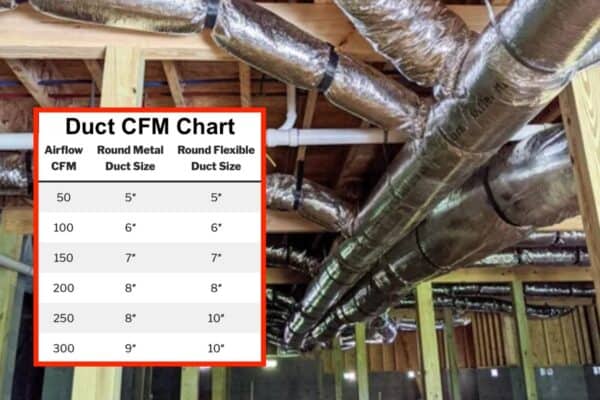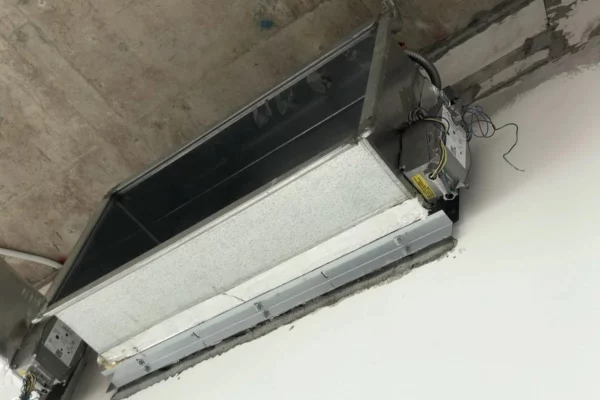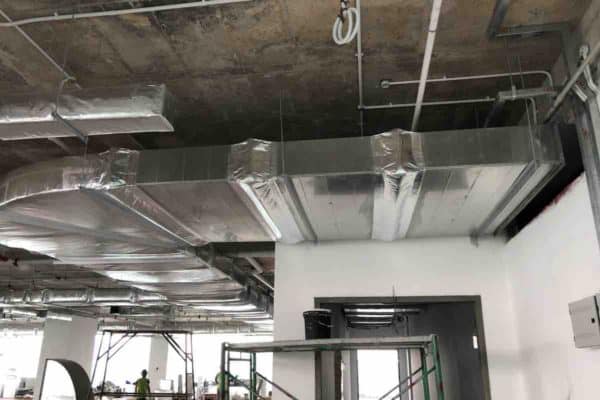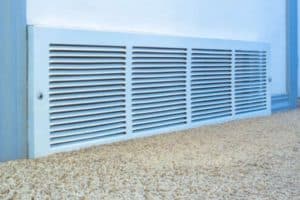3 Types of Metals Used for HVAC Ductwork
Ductwork is one of the core elements of HVAC. Ducts can be made of different metals and different applications require different types of metal. So, what are the types of metals used for ductwork?
The most common type of metal used for ductwork is galvanized iron. Galvanized iron is commonly used as the construction material for rigid rectangular and spiral ducts. Ducts made of galvanized iron are also known as GI ducts.
Other than galvanized iron, there are two more types of metals found in HVAC ductwork. Ducts made of different types of metals have different characteristics.
1. Galvanized Iron (GI)
Galvanized iron (GI) is a corrosive-resistant metal used for ductwork in HVAC. Irons that went through the galvanization process are known as galvanized irons.
GI ducts are comprised of base steel, a layer of zinc coating on both sides and a layer of clear coating on the zinc coating layer (both sides as well) where the zinc coating is comprised of up to 99.7% zinc.
Before GI ducts are made into shapes, they start with what we called GI coils.
Basically, these GI coils are long GI sheets rolled together. Then, these GI sheets are fed into a duct forming machine (eg: CNC or plasma) where through programming, various sizes can be cut out automatically.
After various GI sheets are produced, workers will then manually hammer them into shapes and form the rectangular ducts we see in HVAC ductwork.
Spiral ducts can also be made of galvanized iron (GI). They are extruded directly through machines. Labor work for spiral ducts is much less than for rectangular ducts.
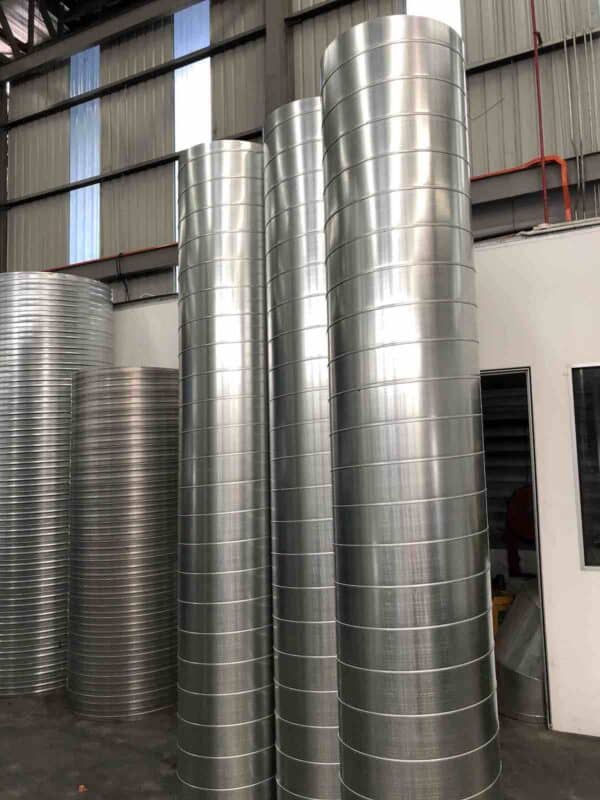
GI ducts can be constructed with different thicknesses. On average, the thickness of GI ducts is around 0.8mm. The thickness of GI ducts is depending on the size of the GI ducts.
Below is a table of GI duct thicknesses based on different duct sizes:
| Duct Size | Sheet Metal Thickness |
|---|---|
| 0 – 300 mm | 0.6 mm (24 AWG) |
| 350 – 600 mm | 0.8 mm (22 AWG) |
| 650 – 750 mm | 0.8 mm (22 AWG) |
| 800 – 1000 mm | 1.0 mm (20 AWG) |
| 1050 – 1500 mm | 1.0 mm (20 AWG) |
| >1550 mm | 1.2 mm (18 AWG) |
Galvanized metal sheets used for ducts as well as other equivalent applications must comply with the JIS G3302 standard. If they do, a mill certificate shall be provided.
Galvanized iron ducts are used for air conditioning ducts where they carry cold or hot air through supply and return ducts. GI ducts are also used for ventilation ducts such as basement smoke spill ducts and staircase pressurization ducts.
Galvanized irons are protected by a layer of zinc coating against corrosion. Hence, GI ducts can’t be welded as damaging the zinc coating will incur corrosion.
Hence, pieces of GI ducts are connected by joints such as the slip and drive joint or the TDC joint.
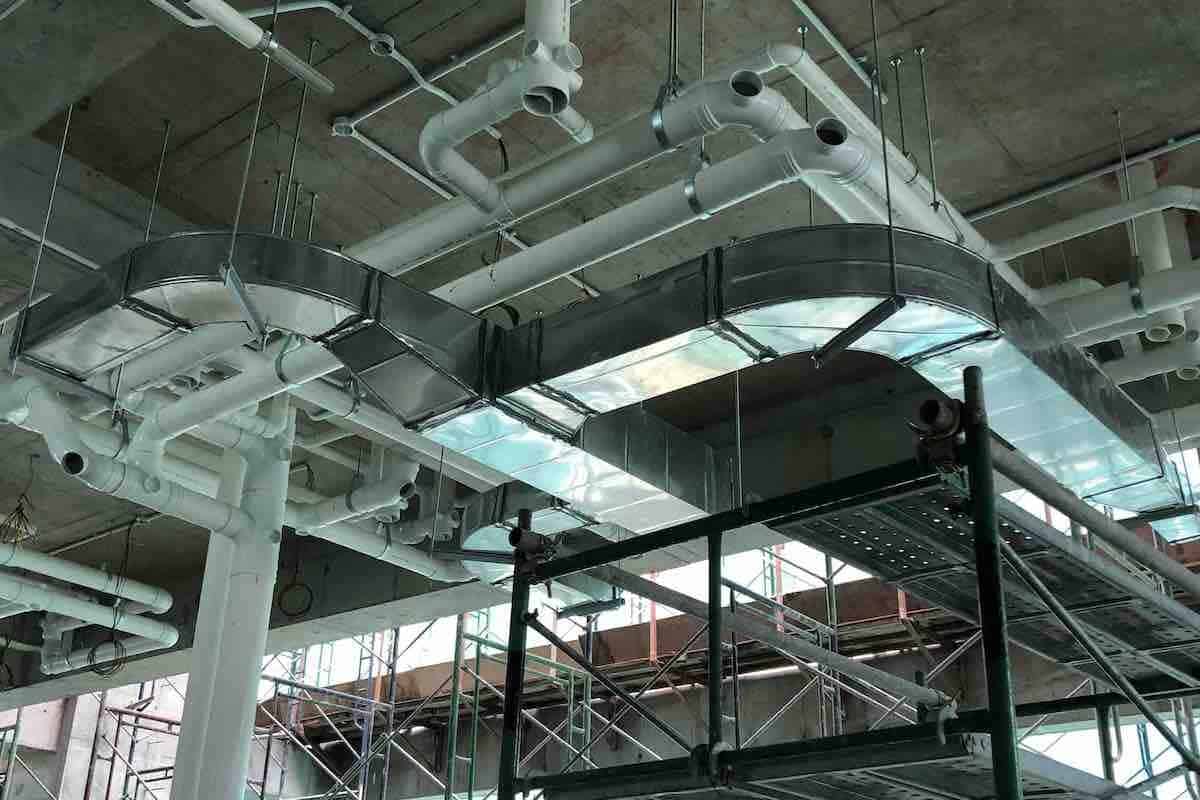
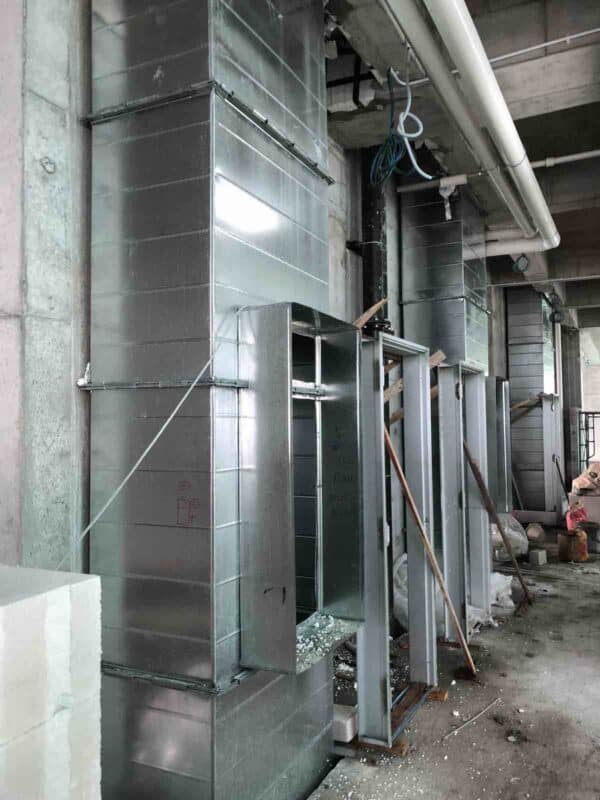
GI ducts are not 100% leakproof. Thus, they are not suitable to be used for kitchen exhaust applications as the cooking smells will sip through the joint.
Supply air diffusers and return air grilles can directly connect to GI ducts but they have usually connected via aluminium flexible ducts so that final positioning is not fixed and minor adjustment is still possible.
Naturally, GI ducts are silver in color. But, when used for fire-related applications such as basement smoke spill ducts, they can be coated with a layer of fire-resistant paint which may be white in color.
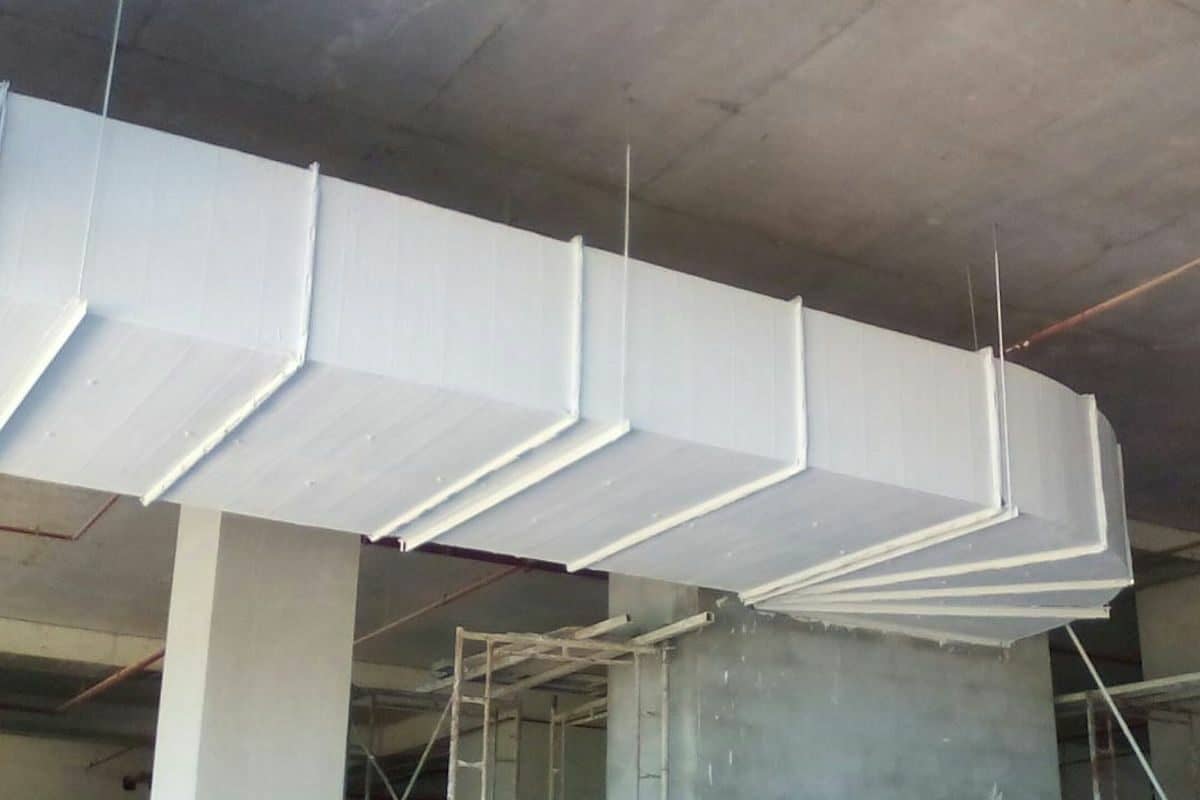
GI ducts can also be directly glued to insulations such as polyethylene (PE) and fiberglass to prevent condensation.
In the meantime, I would like to inform you that you can learn quicker by getting my HVAC Begin (eBook) if you’re a beginner. But, if you have a year or two of experience, then I would suggest you consider my HVAC Basics (eBook). Nonetheless, I encourage you enroll in my HVAC Beginner Course: 10 Days to Become Competent in HVAC if you want to equipped yourself with a complete set of basic HVAC skills.
HVAC Beginner Course
Learn the most basics and foundational HVAC skills including cooling capacity calculation, equipment selection, duct sizing, pipe sizing, exhaust fan sizing, controls, electrical and more.
2. Aluminium
Aluminium is the metal material used for flexible ducts. Almost all HVAC flexible ducts use aluminium.
There are two types of flexible ducts; a) insulated flexible ducts and b) uninsulated flexible ducts. Regardless, both types of flexible ducts are using alunimium material.
Due to the nature of alunimium, flexible ducts are silver in color and often shiny.
Insulated flexible ducts are used for air conditioning applications while uninsulated flexible ducts are used for small ventilation applications such as home kitchen exhaust and toilet exhaust.
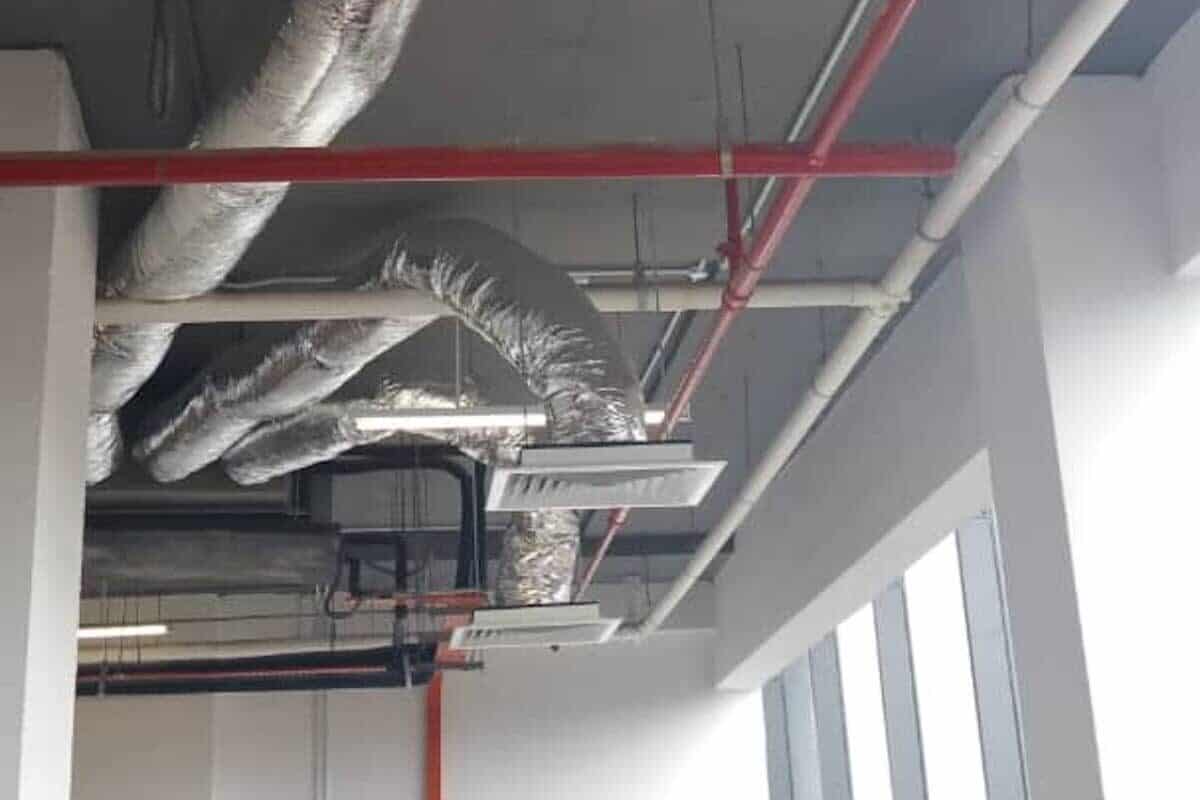
In some countries, flexible ducts are used extensively to replace GI ducts due to cost advantages and ease of installation. However, many had suffer from low airflow issues as flexible ducts tend to bend and twist, causing high airflow resistance.
Alunimium is a lightweight metal. Hence, it is suitable for flexible ducts.
Sometimes, alunimium is also used as the material for spiral ducts instead of galvanized iron (GI). This type of spiral duct is also known as semi-rigid duct.
Apart from flexible ducts, aluminium is the number one material choice for supply air diffusers and return air grilles as it is lightweight and corrosion-resistant at the same time.
People who wish to save costs can choose to use diffusers and grilles made of galvanized iron (GI). However, GI diffusers and grilles tend to rust faster and weigh more than alunimium diffusers and grilles.
In addition, some adhesive tapes used in HVAC ductwork are also made of alunimium.
3. Carbon Steel (Black Steel)
Carbon steel, which is also known as black steel due to the color of the metal is the material used for commercial kitchen exhaust ducts.
As mentioned earlier, GI ducts are not 100% leakproof due to the jointing method. Hence, GI ducts are not suitable for carrying smelly gases.
Therefore, carbon steel is used for kitchen ducts instead because black steel ducts can be welded to achieve 100% leakproof.
Often, black steel kitchen exhaust ducts are painted in green color or other colors depending on the regions and local practices.
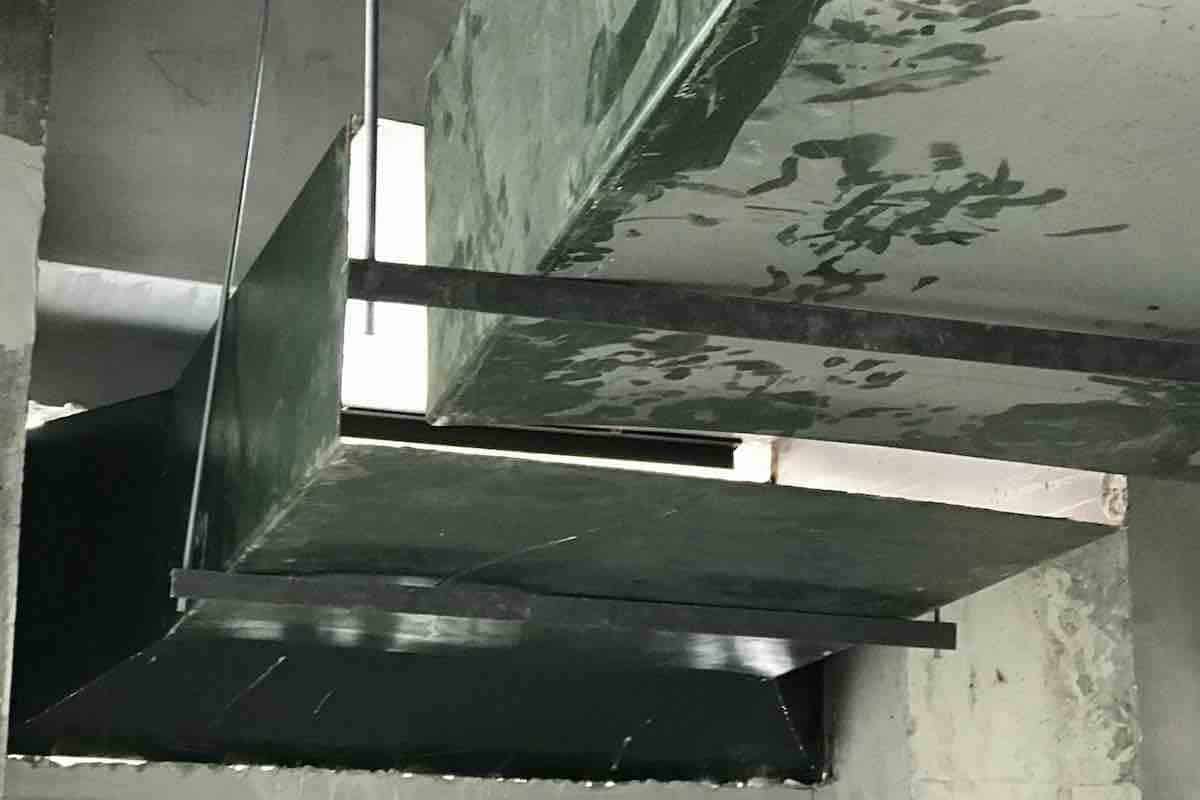
On the other hand, fresh air ducts used for kitchen ventilation systems don’t have to be made of carbon steel as they are not carrying smelly gases. Only the exhaust side needs to be welded.
Unlike GI ducts, black steel ducts usually use 1.2mm thickness regardless of the duct size. Some of them may be thinner but they are generally thicker than GI ducts in order to accommodate the welding process.
Summary
Galvanized iron (GI), aluminium and carbon steel are the three most common metals used for ductwork in HVAC. Their applications can be summarized as follow:
| Ductwork | Material | Application |
|---|---|---|
| Rigid Rectangular Duct | Galvanized Iron (GI) | Air conditioning, basic ventilation |
| Rigid Spiral Duct | Galvanized Iron (GI) | Air conditioning, basic ventilation |
| Fire-Rated Duct | Galvanized Iron (GI) c/w Fire-Rated Paint | Smoke extraction, stairwell pressurization |
| Flexible Duct | Aluminium | Air conditioning, basic ventilation |
| Black Steel Duct | Carbon Steel | Kitchen exhaust |
Lastly, consider my HVAC Begin (eBook) if you’re a beginner and you want to have a foundational knowledge in HVAC. But, if you have a year or two of experience, then I would suggest you consider my HVAC Basics (eBook). Nonetheless, I encourage you enroll in my HVAC Beginner Course: 10 Days to Become Competent in HVAC if you want to equipped yourself with a complete set of basic HVAC skills.
HVAC Beginner Course
Learn the most basics and foundational HVAC skills including cooling capacity calculation, equipment selection, duct sizing, pipe sizing, exhaust fan sizing, controls, electrical and more.
If you have anything to add (or ask) about this topic, leave a comment down below!


